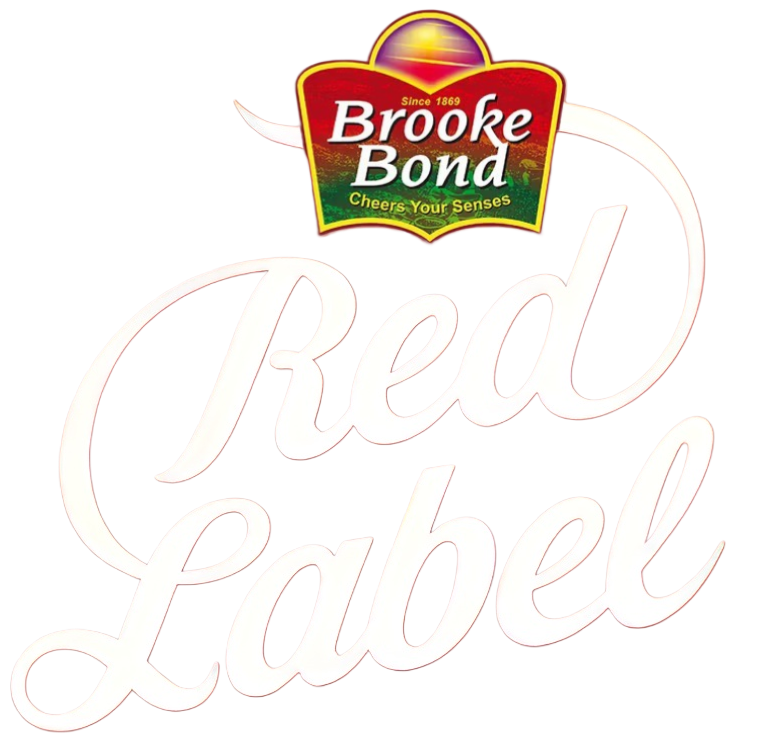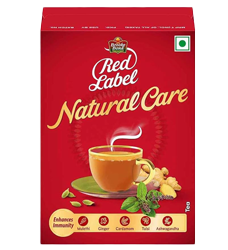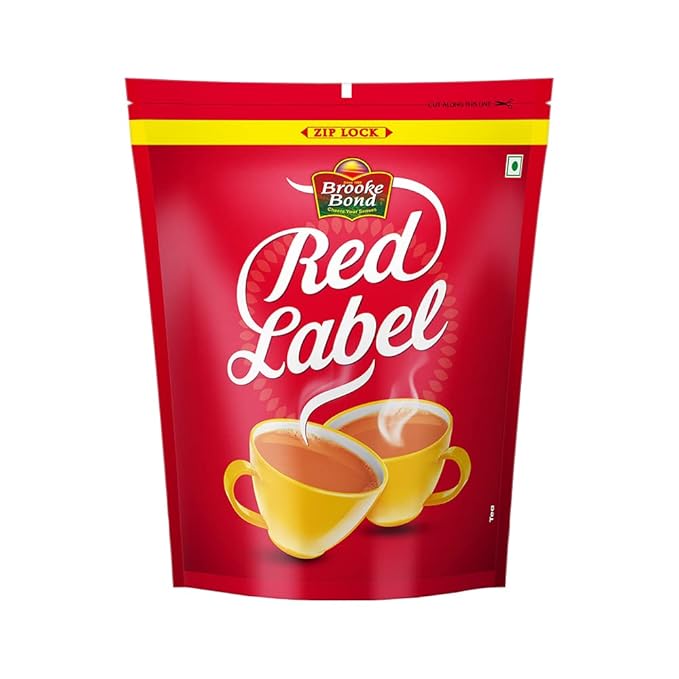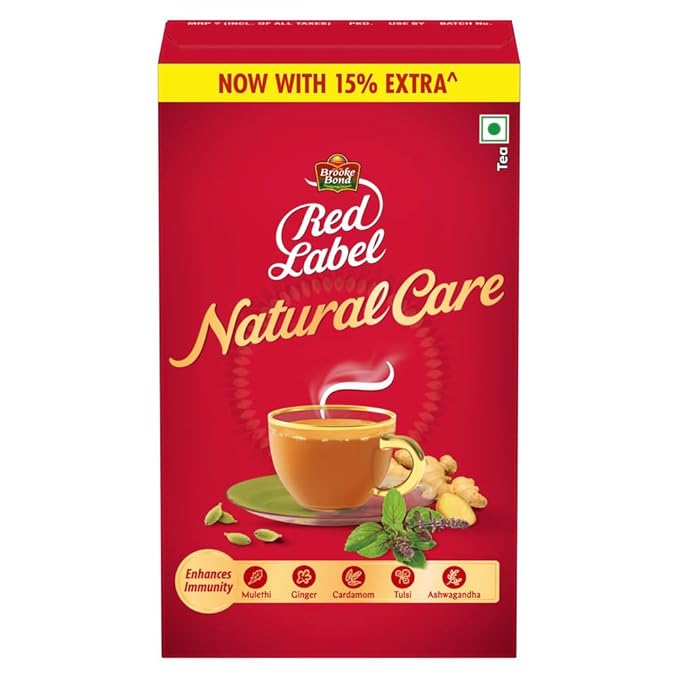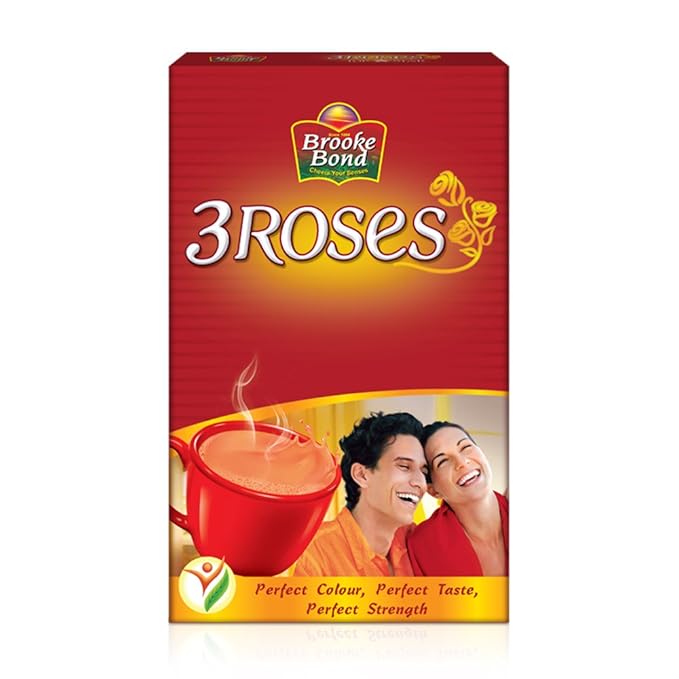Brand Overview
Brand:
Brooke Bond
Parent Company:
Hindustan Unilever Limited (HUL)
Core Categories:
Beverages
Taglines Over the Years:
- Swad Apnepan Ka
- Tasty Tea, Taste of Togetherness
- Let's Unstereotype with Red Label
Market Context at Launch
Early 20th Century India
- Tea was being introduced as a beverage by British planters.
- Consumption was primarily among the British and elites; loose tea dominated the market.
- Branded and packaged tea was a rarity.
- Entered India in 1903, promoting tea as a daily beverage.
- Built its reputation via door-to-door sampling and tea stalls.
- By the 1930s, Brooke Bond had become a household name.
Marketing Mix (4Ps)
Product Strategy
Core Product
- Black tea blend tailored to Indian taste buds—strong, rich, and full-bodied.
- Positioned as a tea for families, with an emphasis on taste and health.
- Red Label Natural Care – With Ayurvedic ingredients (tulsi, ginger, cardamom, etc.).
- Red Label Dust/Leaf – Different SKUs for South and North India preferences.
- Red Label Special – Premium blend for discerning tea drinkers.
- Promoted as “good for the heart” and later as an immunity-boosting beverage, especially through Natural Care.
Pricing Strategy
- Competitive pricing aimed at mass appeal.
- Different pack sizes: from ₹10 sachets to ₹500+ family-size boxes.
- Positioned slightly above local/regional unbranded tea but below premium imported blends.
Promotion Strategy
Early Years
- Focused on taste and consistency, leveraging radio and press advertising.
- Introduced innovative sampling methods — including railway stations and grocery shops.
- Focused on togetherness, harmony, and inclusivity.
- Storytelling around inter-religious bonding, acceptance of LGBTQ individuals, caste conversations.
- One of the first Indian FMCG brands to tackle social prejudices through tea.
- Used emotional moments around shared tea experiences — mother-daughter, tenant-landlord, etc.
- Highlighted tea as a bridge-builder across generations and communities.
- Pitched the tea as “immunity-boosting”, using ayurvedic ingredients and doctor figures.
- Became particularly relevant during COVID-19, with a renewed focus on wellness.
- Often story-led campaigns without celebrity ambassadors.
- Focus on human moments, real characters, and slice-of-life storytelling.
Distribution Strategy
- Distributed via HUL's massive FMCG network—from large modern trade outlets to remote village kirana shops.
- SKU variety allowed for urban and rural penetration.
- Widely available across:
- General trade
- E-commerce (Amazon, Blinkit, BigBasket)
- Institutional buyers (railways, hotels, canteens)
Competitive Landscape
Key Competitors:
- Tata Tea (Tata Consumer Products) – especially Tata Tea Premium and Tata Tea Gold
- Wagh Bakri – strong in Gujarat and Western India
- Society Tea, Girnar, Lipton (HUL) – depending on region
Red Label's Differentiation:
- Positioned as a socially conscious yet affordable brand.
- Strong emotional advertising differentiates it from functional or regional players.
- Pan-India availability and consistent product quality.
Consumer Perception & Emotional Connect
- Red Label is perceived as:
- Trustworthy and dependable
- Inclusive and empathetic (especially due to its progressive ad campaigns)
- A brand that represents India's diversity, not just in taste but in values
- Enjoys strong emotional equity with homemakers and elderly consumers, yet also connects with youth through its social themes.
Challenges & Strategic Responses
Challenges:
- Rise of regional players with localized blends (e.g., Wagh Bakri in Gujarat).
- Growing consumer interest in green tea and herbal infusions.
- Price sensitivity, especially in inflationary times.
- Loose tea segment still significant in rural markets.
- Developed custom blends for regional palates (stronger teas for North India, more fragrant for South).
- Introduced Natural Care and green tea variants.
- Leveraged social purpose-led storytelling to deepen emotional connection.
- Used multi-pack and mini-packs to stay relevant in low-income households.
Impact & Legacy
- One of India's oldest and most widely consumed tea brands.
- Helped formalize the tea category, shifting consumers from loose to branded tea.
- Pioneered the “social messaging in advertising” trend in FMCG.
- Continues to be a template for purpose-driven marketing in India.
Current Position (as of 2025)
- Among India's top 3 packaged tea brands by volume and value.
- Estimated annual turnover for Red Label brand: ₹2,000–2,500 crore+
- Leading position in North and East India; strong presence nationally.
- Continues to be a flagship brand for HUL in beverages.
Key Learnings
- A commodity like tea can be powerfully branded through emotional and purpose-driven storytelling.
- Consistency in taste, supply chain, and distribution is critical for staple products.
- Purposeful branding doesn't alienate the masses—Red Label built empathy, not controversy.
- SKU flexibility and pricing tiers ensure both rural penetration and urban dominance.
Summary
Brooke Bond Red Label is not just a tea brand—it's a cultural mainstay in Indian homes. From being a British import to becoming an Indian icon, its journey reflects how taste, trust, and togetherness can be brewed into brand strength. By blending flavor with purpose, Red Label has transformed a daily ritual into a national narrative of empathy, unity, and warmth.

